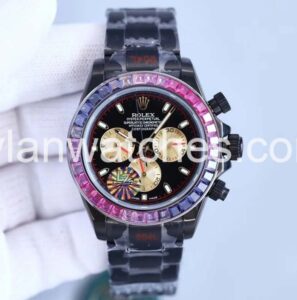Table of Contents
We all know that kimono is Japanese traditional attire and it is often worn during special occasions, mostly by women. The female kimonos have become a fashion trend, not only among the Japanese themselves, but many foreigners are interested to try it once in a lifetime.
So, before you choose your kimono, let’s have a look at some of the styles available. Make sure you are wearing the correct one for the occasion.
-
Furisode
Furisode (pronoun foo ri sody without any syllables) is worn by unmarried women. Basically, furisode means swinging sleeves due to long sleeves that fall into 39 to 42 inches. They are decorated with a color pattern that fills the whole garment. The longer the sleeve is, the more formal it is. It is the most formal clothes for unmarried women to wear in special occasions including coming of age ceremony, voting, wedding ceremony (unmarried female relative from the bride’s family) and tea ceremony.
-
Komon
Komon (小紋, literally small pattern) are worn by married and unmarried women. They have a pattern covering the entire kimono but with no particular direction or layout. Komon are the most informal silk kimonos.
-
Tomesode
Tomesode (留袖, literally fastened sleeve) are the most formal kimono worn by married women. They always have crests, and the patterns, which may incorporate gold and silver, are only below the waist.
They may be worn by guests at formal events like weddings. Iro tomesode can have any base color other than black, and may have one, three, or five crests.
-
Odori Katami Gawari
Odori means dance, so this is a traditional Japanese dancer’s kimono. Katami Gawari means half and half, referring to this kimono being half one design and half another, which is more likely to be seen on an odori kimono than any other. Many odori kimonos are tsukesage, houmongi or komon in style. They are often in synthetic textiles, so they can, unlike silk, be washed regularly and they are most frequently unlined or just lower lined, to keep the dancer cooler.
-
Kakeshita Kimono
A Kakeshita Kimono is bridal attire, and features a padded hem. This kind of kimono is not to be confused with an Uchikake. These kinds of kimono also feature the long sleeves in the style of the furisode. Some cosplayers will use these kinds of kimono for Maiko cosplay. The lining for these kinds of Japanese kimono is a solid red.
-
Iromuji
Iromuji (色無地, literally plain colour) are unpatterned kimonos in a single-colored kimono worn by both married and unmarried women. They are most appropriate for tea ceremonies. The formality is determined by the absence or presence and number of crests.
-
Mofuku
Mofuku is the mourning dress worn by both male and female. They wear a complete plain back silk with five crests over white undergarments and white tabi. As for women, obi and other accessories are also black. The completely black mourning clothes is for family and those who are close to the deceased.
-
Yukata
Yutaka is worn at festivals taking place in summer. Yutaka has a bright color and simple design. It is a cotton and unlined kimono that is informally worn by male, female and any one in any types of ages. Compared with other types of kimonos, Yutaka kimonos are much easier to wear and maintain and less expensive. In Vietnam, this type of kimono is very popular, noticeably, they are mostly worn in manga and cosplay festivals.
-
Houmongi Kimono
Houmongi kimonos are more conventional than Tsukesage kimonos. They include a plan that gets over the creases. These kimonos are semi-formal to formal contingent upon how they are frilled and to the sorts of spots they are worn to. This sort of kimono is adequate for an individual to wear as a participant to a wedding, to a proper supper, and other significant social capacities as a visitor. Normally nagoya obi and fukuro obi are worn with these sorts of kimono.
10.Tsukesage Kimono
Tsukesage kimonos are semi-formal kimono attire and typically feature a scattered design around the kimono that is not an overall pattern. The Tsukesage pattern does not join up across the seams of the kimono. Typically nagoya obi are worn with these kinds of kimono. There are kimonos that are a blended version of Tsukesage and Houmongi styles that are a semi-formal style that is between the two kinds of kimono. Juban are worn under this kimono, as with almost all kimonos except yukata.


More Stories
Is Your Beauty Salon in New Haven, CT Really Up to Par? Here’s How to Find Out!
Unlocking Timeless Elegance: Your Complete Guide to Vintage Hermes Scarves
The Versatility of Cardboard Paper Tubes in Packaging